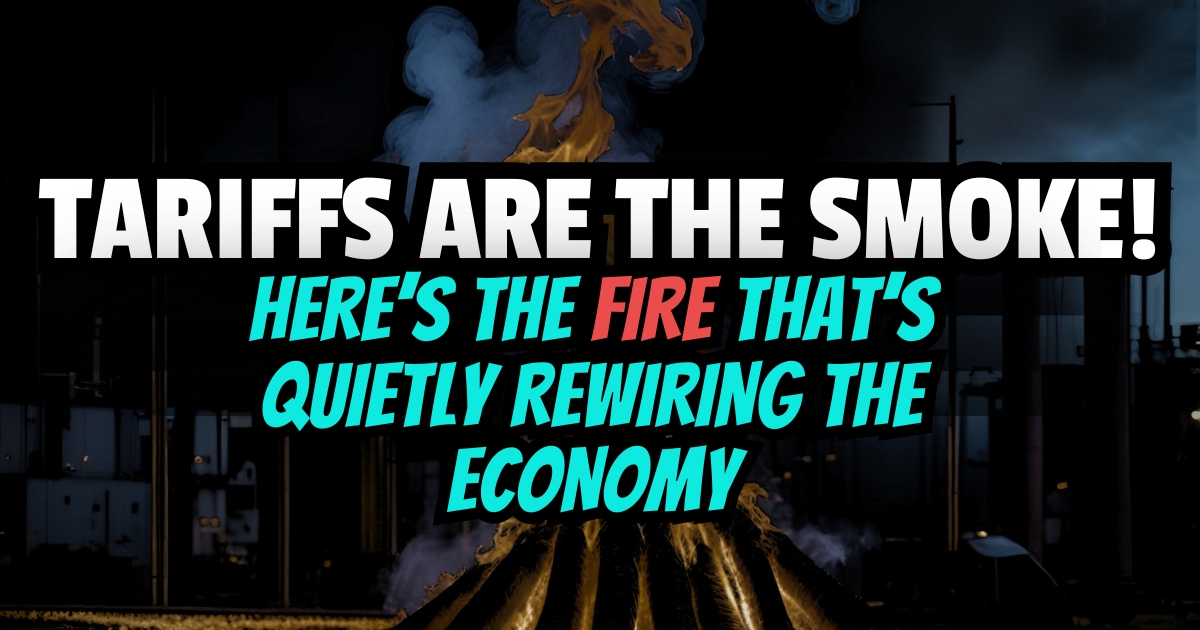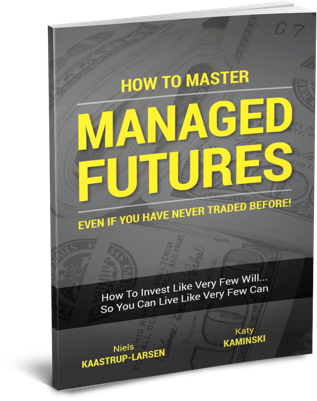Tariffs Are the Smoke - Here’s the Fire That’s Quietly Rewiring the Economy

- Veteran economist Steven Bell says AI, not tariffs, is the real force reshaping the global economy.
- As the Fed quietly shifts its stance and inflation remains persistent, investors must rethink the old playbook.
- With 50 years of market insight, Bell shares what investors should watch as inflation, tech, and politics collide.
If you want to understand where the economy is going, it helps to start by asking a deceptively simple question: What’s changing, and what’s just making more noise?
In markets, as in life, the loudest thing isn’t always the most important. In fact, the louder the signal, the more likely it is that people are reacting to it rather than thinking clearly about it.
Over the past few years, a lot of noise has come from tariffs, deficits, and political tension. But according to Economist Steven Bell, we are in the early innings of a transformation that’s not driven by trade policy or central banks, but by the way artificial intelligence is reshaping how humans work, think, and create value.
That doesn't mean tariffs don’t matter. They do. We tend to prize certainty and control, and it's usually easier to focus on things such as import taxes or inflation targets because they feel knowable. You can model and debate them. They’re on the front page.
But it’s the silent shifts, including the slow accumulation of new tools, new expectations, new ways of doing the same job, that tend to reshape the economy over time. That’s where AI enters the picture.
Productivity Is the Real Driver
The health of an economy is typically judged by its GDP, unemployment rate, or inflation numbers. But zoom out far enough and one force quietly drives long-term prosperity: productivity.
When a worker can do more in the same amount of time, society as a whole gets richer. For decades, we’ve been stuck in a productivity slump. The internet and mobile revolution brought bursts of efficiency, but they also gave us distractions and diminishing returns.
Now, AI promises to rewrite that script, not by replacing everyone overnight, but by changing what certain roles are worth. It won’t eliminate the job market, but it will redefine it. Just as spreadsheets didn’t get rid of accountants but made them more valuable, large language models and AI-powered tools will do the same for knowledge workers, creatives, and yes, investors.
We’re not far from a world in which writing an investment memo, summarizing a Fed report, or parsing through 10-Ks takes minutes instead of hours. When time collapses like that, the opportunity set expands. People can spend more time thinking, less time formatting.
The winners won’t be the loudest. They’ll be the ones who adapt fastest to this new tempo.
Tariffs Are the Smoke, Not the Fire
Now back to the noise. The return of tariffs as a tool of U.S. policy has broken a 70-year trend of liberalizing trade. For decades, global commerce moved in one direction: fewer barriers, more integration. That era is over.
But just because the pendulum is swinging doesn’t mean it will erase everything we’ve built. Tariffs will affect prices. They’ll change where some goods are made. They may even shift parts of the labor market. But they are symptoms of a broader, more emotional shift: a world that’s less certain, less trusting, and more fractured.
This isn’t a purely economic story. It’s a political one, and political stories don’t follow tidy economic models.
The deeper concern isn’t whether a 15% baseline tariff becomes standard. It’s how businesses and consumers internalize that uncertainty. If CEOs start hesitating on capital investments or pulling back on hiring, that ripples through the system faster than any policy change.
Still, companies are adapting. Japanese automakers are already cutting export prices to absorb tariffs. Semiconductor firms are bringing production stateside, albeit with overseas workers. The system bends before it breaks.
In short: tariffs are friction, AI is fuel. Don’t confuse the two.
A World of Winners and Losers
Every major shift creates imbalance. Some people get richer, some jobs disappear, some skills become exponentially more valuable while others fade into obsolescence. This is the tension that no economic forecast can resolve: progress rarely lifts everyone equally.
If you write code, analyze data, or work with language and logic, AI will likely increase your productivity. If you work in a job built around repetition or formulaic output, you may find yourself competing with a machine that doesn’t need sleep, benefits, or vacation time.
That doesn’t mean society is doomed. It just means we’re heading for redistribution of income, of opportunity, of leverage. Some sectors will boom, others will shrink. That’s not new, but the speed of change will be.
Investors should prepare for this imbalance rather than fear it. Under the surface of volatility lies opportunity. As roles shift and companies scramble to adapt, capital will chase the firms that get it right, and those companies won’t just be tech giants. They’ll be in energy, logistics, manufacturing, and healthcare, anywhere that inefficiencies can be eliminated with smarter systems.
The key is to stay curious and nimble, and to look past headlines and toward long-term implications.
The Fed Won’t Save You, But It Won’t Destroy You Either
It’s easy to fixate on the Federal Reserve. Interest rates go up, markets fall. Rates come down, risk assets rebound.
But we may be entering a stretch where the Fed is less of a driver and more of a backdrop. Inflation is cooling, wages are stabilizing, and the real story isn’t whether we get a quarter-point cut in September. It’s how central banks subtly shift their target without admitting it.
No one wants to say it out loud, but 2% inflation may quietly become 2.5%, maybe 3%. Not by policy, but by practice. That’s not a failure; it’s a recalibration.
If the world has structurally higher deficits, fragmented supply chains, and a rising cost of labor, expecting inflation to sit quietly at 2% forever is a fantasy. But as long as it’s stable and predictable, markets can adjust. The challenge, as always, will be separating signal from noise. One month’s CPI print or a surprising payroll number can stir up panic, but true trends unfold slowly and demand patience to see clearly.
What You Own Still Matters
In a climate reshaped by AI and peppered with policy shifts, portfolio construction still comes down to a few timeless questions:
- What assets protect you in a downturn?
- What assets grow in the long run?
- Where are you getting paid to take risk?
Equities, especially U.S. tech stocks, still look appear to be the best long-term growth engine. Bonds, while no longer dirt cheap, still matter as a hedge, particularly if rates fall or recession risks return. For those seeking uncorrelated returns, corners of the market such as catastrophe bonds, supranationals, or emerging market debt may provide unexpected value.
The danger isn’t being wrong; it’s being inflexible. Clinging to old models, ignoring structural changes, or pretending the next decade will look like the last one. If productivity really rises, if wages reset, and if global politics continue to rewrite the rules of trade and cooperation, the smartest investors will be the most adaptable.
Final Thought: The Story Behind the Data
We often think of markets as math. But markets are stories, told in numbers.
The story right now is one of transition, from globalization to fragmentation, from human-only productivity to human-plus-machine output, and from stable inflation to a slightly hotter equilibrium. Like all stories, it has characters: politicians, central bankers, technologists, and investors. It also has themes: fear of change, hope for reinvention, anxiety about who wins and who loses.
If you want to invest well in this next chapter, don’t just watch the data. Understand the story it's telling. Then decide whether it’s noise or something new.
This is based on an episode of Top Traders Unplugged, a bi-weekly podcast with the most interesting and experienced investors, economists, traders and thought leaders in the world. Sign up for our Newsletter or subscribe on your preferred podcast platform so that you don't miss out on future episodes.
Most Comprehensive Guide to the Best Investment Books of All Time

Most Comprehensive Guide to the Best Investment Books of All Time
Get the most comprehensive guide to over 500 of the BEST investment books, with insights, and learn from some of the wisest and most accomplished investors in the world. A collection of MUST READ books carefully selected for you. Get it now absolutely FREE!
Get Your FREE Guide HERE!




